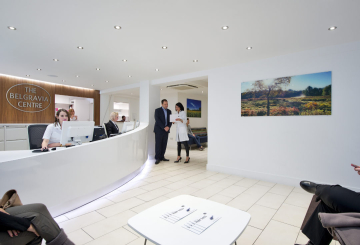-
Male Hair Loss Conditions
- Male Pattern Hair Loss
- Other Conditions
-
Male Hair Loss Treatments
- Hair Loss Treatments – A Guide
-
Patterns of Hair Loss
- Receding Hairline
- Thinning Crown
- General Thinning
-
Hair Loss Success Stories
- Hair Regrowth Photo-Gallery
-
Female Hair Loss Conditions
- Hair Loss in Women - Guide
- Female Pattern Hair Loss
- Telogen Effluvium (TE)
- Diffuse Thinning | Chronic TE
- Alopecia Areata
-
Female Hair Loss Treatments
- Female Hair Loss Treatments - A Guide
- Belgravia High-Strength Minoxidil
- Hair Vitalics For Women
- Clinical Treatment Therapy
-
Hair Loss Success Stories
- Women’s Hair Regrowth Photo-Gallery
-
Back
-
Male Hair Loss Conditions
- Male Pattern Hair Loss
- Other Conditions
-
Male Hair Loss Treatments
- Hair Loss Treatments – A Guide
-
Patterns of Hair Loss
- Receding Hairline
- Thinning Crown
- General Thinning
-
Hair Loss Success Stories
- Hair Regrowth Photo-Gallery
-
Back
-
Female Hair Loss Conditions
- Hair Loss in Women - Guide
- Female Pattern Hair Loss
- Telogen Effluvium (TE)
- Diffuse Thinning | Chronic TE
- Alopecia Areata
-
Female Hair Loss Treatments
- Female Hair Loss Treatments - A Guide
- Belgravia High-Strength Minoxidil
- Hair Vitalics For Women
- Clinical Treatment Therapy
-
Hair Loss Success Stories
- Women’s Hair Regrowth Photo-Gallery
Scientific Study Comes Closer to Banishing Baldness
A cure for baldness could be closer than we might think, after a team of American and British scientists worked together on a recent study to renew follicles which sprout hair. These follicles grow from cells called ‘dermal papillae’ which play a vital role in the growth of healthy hair. The study harvested cells from the hair follicles of 7 donors and by clumping the cells together, 5 out of the 7 areas produced new hair the hair follicles were tested using DNA analysis and confirmed to match the donors.
Clinical trials
Of course, it’s still early days, but the team of international scientists behind the study believe that clinical trials could take place ‘in the near future.’ Professor Angela Christian of Columbia University Medical Centre in New York said: "The method has the potential to actually grow new follicles using a patient’s own cells. This could greatly expand the utility of hair restoration to women and to younger patients."
New techniques
The cells in question, dermal papillae, are found at the base of hair follicles, and this new research follows on from earlier studies by Professor Colin Jahoda at the University of Durham, which demonstrated that dermal papillae could be transplanted back into skin.
Whilst the idea to clone hair follicles using dermal papilla cells may have been around for the last 40 years or so, the problem has always been how to expand enough cells to regenerate hair, without losing the cell’s inductive properties. This technique could not only offer new treatment to women and men experiencing baldness, it could also be a breakthrough treatment for burns victims, as when the cells are initially harvested from the hair follicles, their tendency is to grow into new skin rather than hair. This could be useful in future for anyone needing large area of skin grafts, and the treatment could also be used to replace eyelashes or eyebrows for burns victims.
Help for burns victims?
Because the method can rejuvenate hair follicles or induce hair follicles using cells from just several hundred donor hairs, it could be used effectively to help those with Scarring Alopecia or burns. Of course, the real challenge will be matching the hair’s colour, shape and thickness to the surrounding hair, and ensuring it grows in the right direction for a natural look similar to the individual’s own hair.
Professor Colin Jahoda from the University of Durham commented: “Ultimately, we think that this study is an important step towards the goal of creating a replacement skin that contains hair follicles.”
With more people seeking hair loss treatments than ever before, this breakthrough could spell an end to baldness in the future, although the studies still have a long way to go before clinical trials can commence.

The Belgravia Centre
The Belgravia Centre is a world-renowned group of a hair loss clinic in Central London, UK. If you are worried about hair loss you can arrange a free consultation with a hair loss expert or complete our Online Consultation from anywhere in the world for home-use treatment.
View our Hair Loss Success Stories, which includes the world's largest gallery of hair growth photos and demonstrates the level of success that so many of Belgravia's patients achieve.
